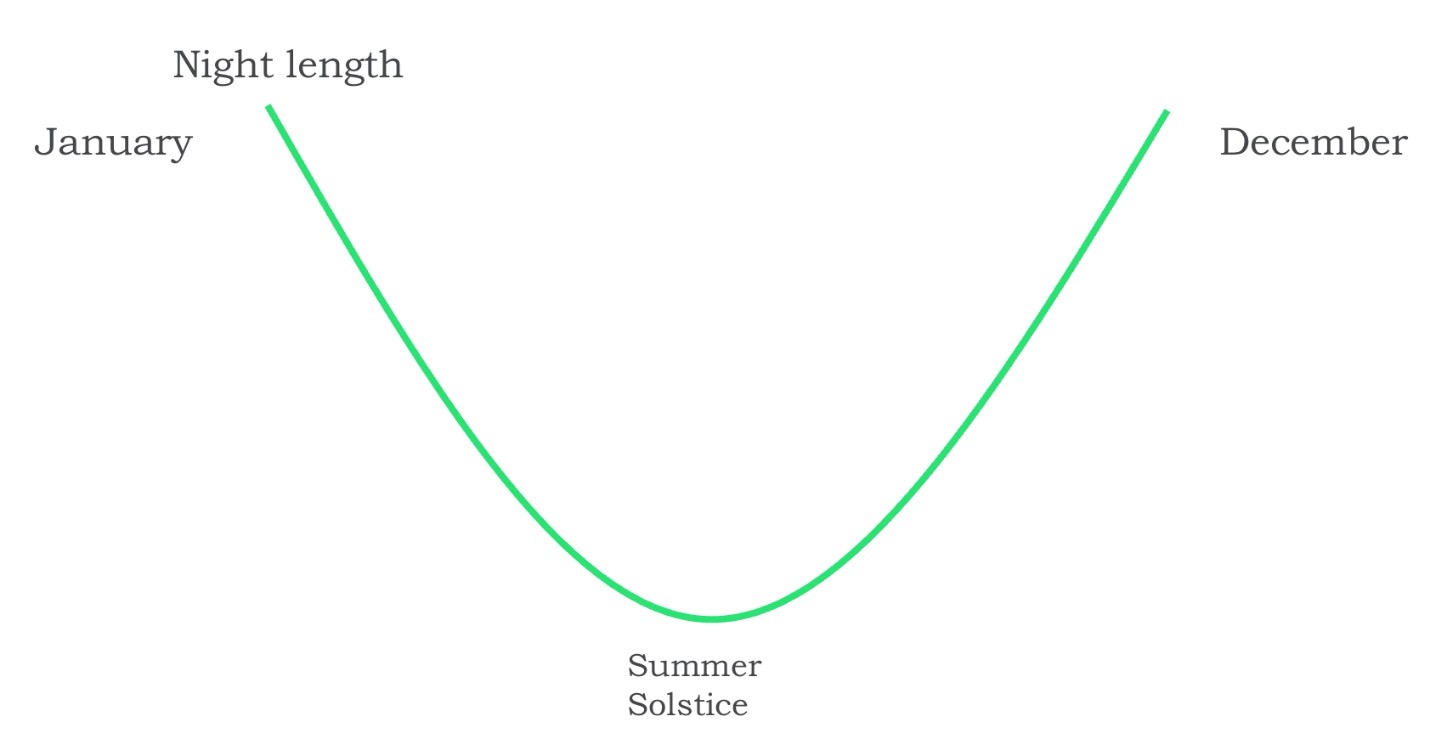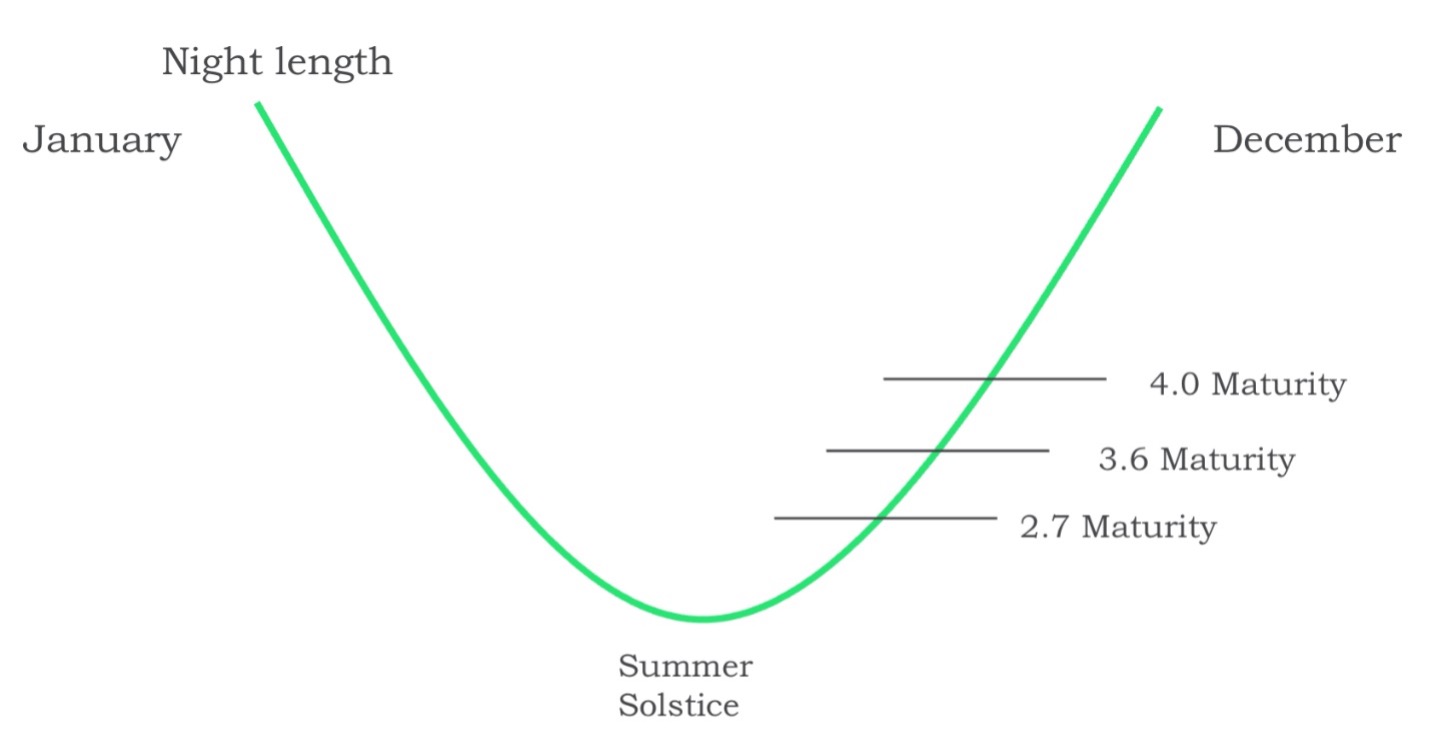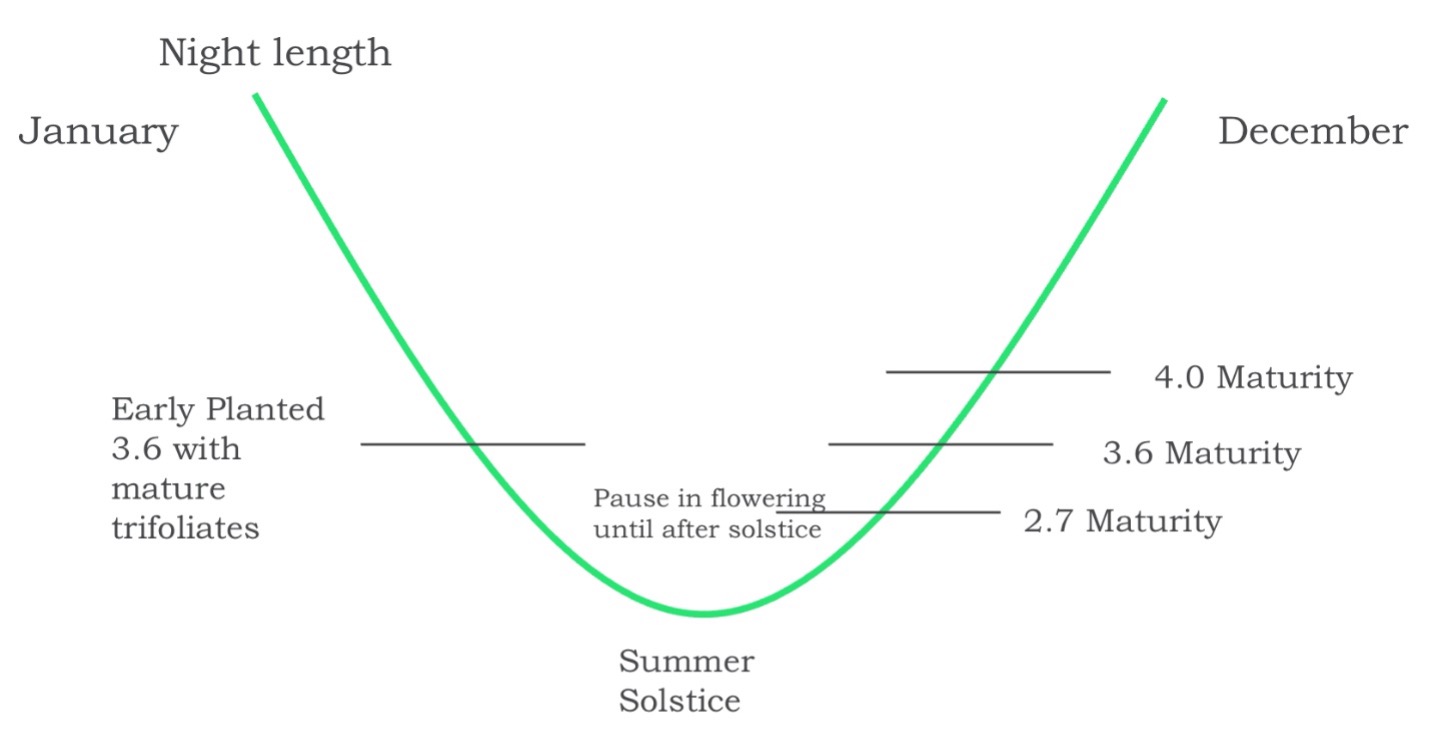ILSOYADVISOR POST
Early Planting Soybean? Yield Increase Secret Unlocked!
Early planted soybeans are a hot topic and is the cheapest input to higher yields in soybeans, barring any replants, it costs nothing extra. In his March 21 blog, Risks and Rewards of Planting Soybean Early, Todd Steinacher did a fantastic job of going through the pros and cons to consider this practice on your operation. Let’s look at this from the plant’s point of view to see how and why early planting soybeans promotes higher yields.
Many have seen the V and R stages in either the Illinois Crop Management handbook, Purdue Agronomy Guides, or your favorite agronomic outlet so I won’t go into the details of the V stages. But I will focus on when R-1, beginning bloom, begins. This is defined as when one flower is open at any node on the main stem. Pretty easy right? Yes, it is, especially if those flowers are purple because they are easy to spot. So, what actually triggers that plant to flower? The simplest answer is length of nighttime, also referred to as day length. When there are mature trifoliate leaves, phytochrome activity is triggered by the length of night and tells the soybean plant, “Hey, you’d better wake up and start making flowers before you run out of time!”
What does this have to do with planting early getting more yield? Stay with me, we’re almost there. I mentioned earlier that night length triggers soybean flowering and we know the longest day of the year (shortest night) is at the summer solstice. So, we can think of the length of night from January to December as a parabola as in Figure 1 with night lengths being short, growing longer and longer until it peaks at the summer solstice, then start to shorten back up again. Most soybean plantings will have soybeans start flowering after the summer solstice due to the lack of mature trifoliate early enough as depicted in Figure 2. However, because of this parabolic curve, there are identical night lengths on either side of the summer solstice.

Figure 1: Night length depicted by the parabolic line getting longer from January until the summer solstice and then beginning to shorten back up again until the end of December.

Figure 2: Flowering time for normal planting time for soybeans. This graph shows how soybeans normally flower after the summer solstice.
For this discussion, let’s say that May 18 has the same night length as July 8. If we can plant early enough to have mature trifoliate on May 18, then we can trigger flowering before the summer solstice, because the soybean plant is fooled into thinking the nights could be getting shorter so it starts putting on flowers on the lower nodes. As the nights get longer it says, “wait a minute, I shouldn’t be flowering yet,” and will actually take a pause in flowering, see Figure 3. While it is in that pause, it continues to add nodes, trifoliate, AND those flowers will mature and turn to pods. After the summer solstice, we get to the night length trigger time again, July 8 for this example, and it begins to flower again! At this point, those first sets of flowers may be closed up and unnoticeable, but the plant was able to take up enough sunlight in the lower canopy to allow those pods to start filling and add to yield. After the second flowering period begins, the plant reacts as it normally does, flowering and adding flower clusters at each node it can.

Figure 3: Soybeans flower before the solstice due to identical night length after the solstice, then pause in flowering for a short time until the equal night length is reached after the summer solstice, allowing early planted soybeans to have mature flowers prior to canopy closure.
The biggest difference between the later planting that cannot trigger flowering before the solstice, is the inability to have viable seed in the lower part of the canopy. This is because many times the canopy may be closed and there is no sunlight to those lower leaves to allow the pods to fill enough - or at all - to add to yield. Getting those lower nodes started early with viable flowers, pods, and eventually seed is one reason why we see higher yields in earlier planted soybeans.
The next time you are thinking of ways to improve soybean yields, looking at your planting date is a great place to start. Just getting those plants off to an early start so they can absorb as much sunlight as possible and start the phytochrome activity early, makes a difference. In Central Illinois, mid- to late-April is generally early enough to see these types of responses and in some years, even early May. In other areas, think of when you start planting corn, and start planting soybean as well.





Comments
Add new comment